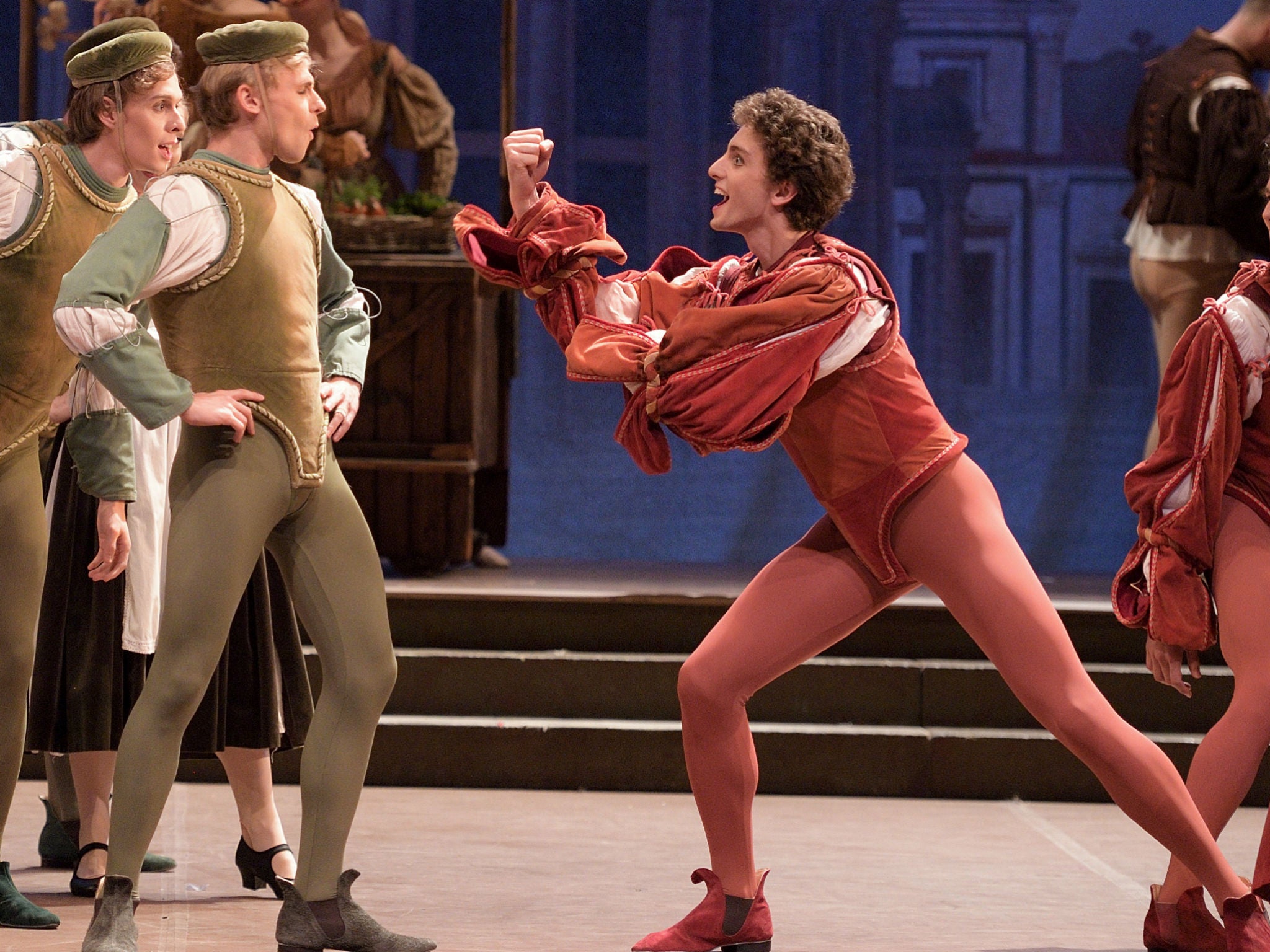Romeo and Juliet, Royal Festival Hall, London, review: an uphill struggle
English National Ballet's revival of Rudolf Nureyev's production feels squeezed on this stage, and sidelines its heroine by focusing on the male relationships

Your support helps us to tell the story
From reproductive rights to climate change to Big Tech, The Independent is on the ground when the story is developing. Whether it's investigating the financials of Elon Musk's pro-Trump PAC or producing our latest documentary, 'The A Word', which shines a light on the American women fighting for reproductive rights, we know how important it is to parse out the facts from the messaging.
At such a critical moment in US history, we need reporters on the ground. Your donation allows us to keep sending journalists to speak to both sides of the story.
The Independent is trusted by Americans across the entire political spectrum. And unlike many other quality news outlets, we choose not to lock Americans out of our reporting and analysis with paywalls. We believe quality journalism should be available to everyone, paid for by those who can afford it.
Your support makes all the difference.English National Ballet's Romeo and Juliet is full of things that don't fit. Rudolf Nureyev's production has bright ideas that don't find satisfying theatrical shape, while this revival has been squeezed onto the ballet-unfriendly stage of the Royal Festival Hall. The company's energetic performance never flags, but it's an uphill struggle.
The revival marks the 40th anniversary of Nureyev's 1977 staging. A blazing star dancer and a man of restless intelligence, he emphasised the ballet's male roles and its renaissance setting. Looking back to Shakespeare's play, he reinserts scenes that had been dropped from the Prokofiev score, or has the dancers act out some of the text's metaphors. This makes for choppy pacing and storytelling. The star-crossed lovers keep being nudged away from the centre of the action.
Ezio Frigerio's set recalls 15th-century Italian paintings of the ideal city, but plague carts and figures of fate lurk threateningly at the edges of the action. The costumes are sumptuous, with rich reds for the Capulets and shades of green for the rival Montague clan. Though the Royal Festival Hall stage has been extended, it remains a cramped space for a ballet on this scale, particularly in scene changes.
Isaac Hernández is an idealistic Romeo, ready to slip into romantic daydreams. Nureyev's choreography is frantically busy – why do just one step, when you could crowd in seven? – but Hernández works valiantly to give it clarity and musical shape. His technique is clean, particularly in beaten steps. He's a tender partner for Erina Takahashi's quick, light Juliet, but as a couple they lack passion. The production doesn't give them enough time together.
By focusing on Verona society, and especially on the story's male friendships, Nureyev keeps sidelining his heroine. He often dramatises her conflicts with dream and imaginary sequences. When she decides to take Friar Laurence's sleeping potion, she's haunted by the ghosts of Tybalt and Mercutio, symbolising her choices. It also shifts the attention away from Juliet herself. Takahashi's acting is clear, but she doesn't have the weight to override the production.
This revival, staged by Élisabeth Maurin and Lionel Delanoë, is a lively company performance. Fernando Bufalá is a swaggering Mercutio, while James Streeter's Tybalt has affection for Juliet as well as family pride. Emilio Pavan is a naïve, well-meaning Paris, while Alison McWhinney makes the most of her scenes as Rosaline. Gavin Sutherland conducts a robust performance of the edited Prokofiev score.
'Romeo and Juliet' is at the Royal Festival Hall till 5 August
Join our commenting forum
Join thought-provoking conversations, follow other Independent readers and see their replies
Comments